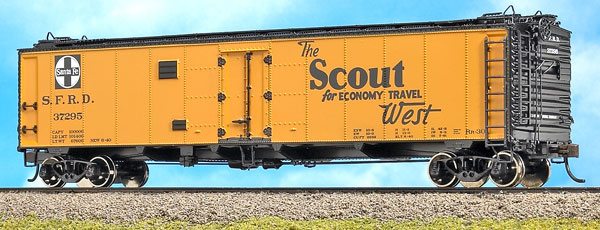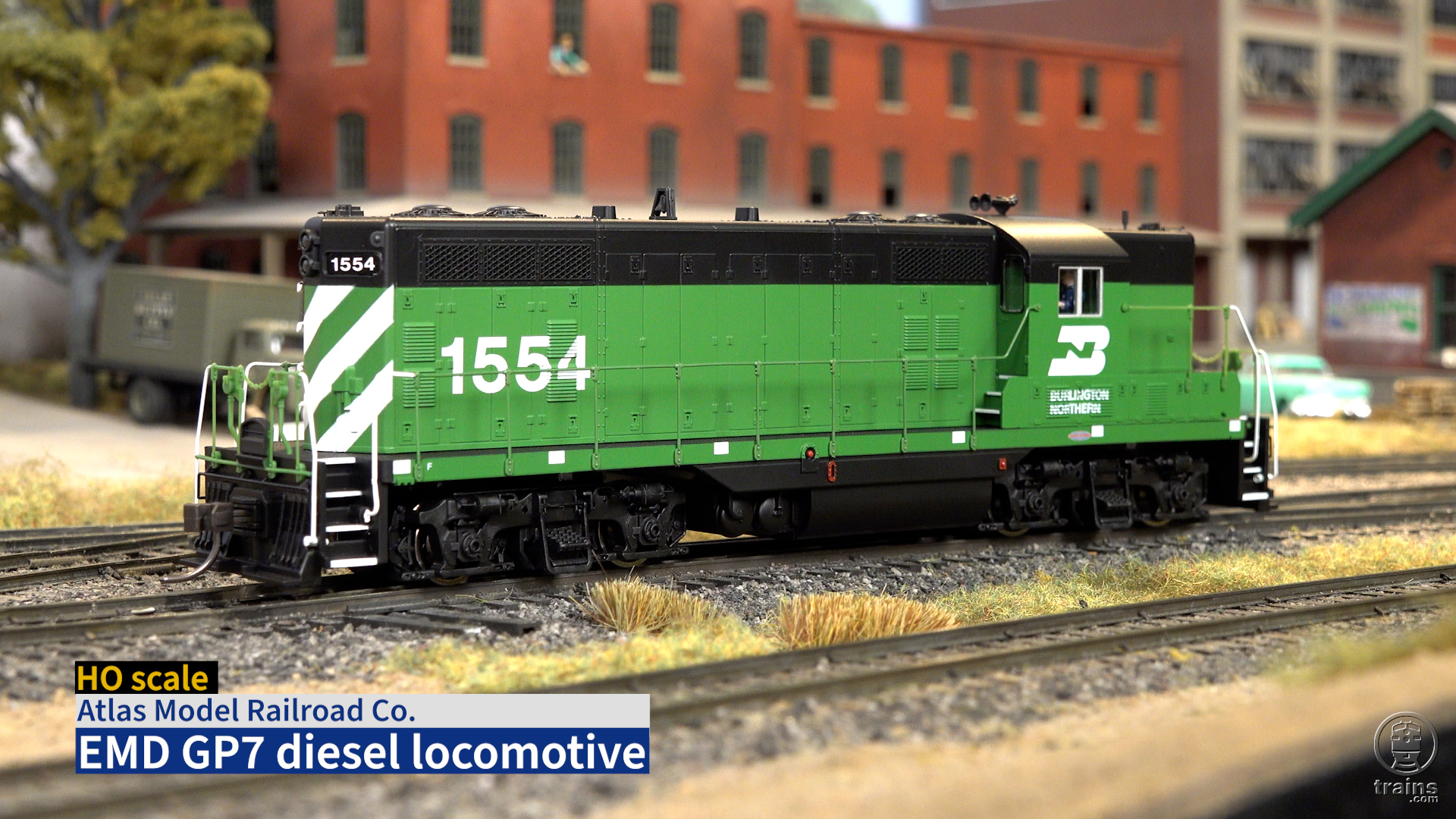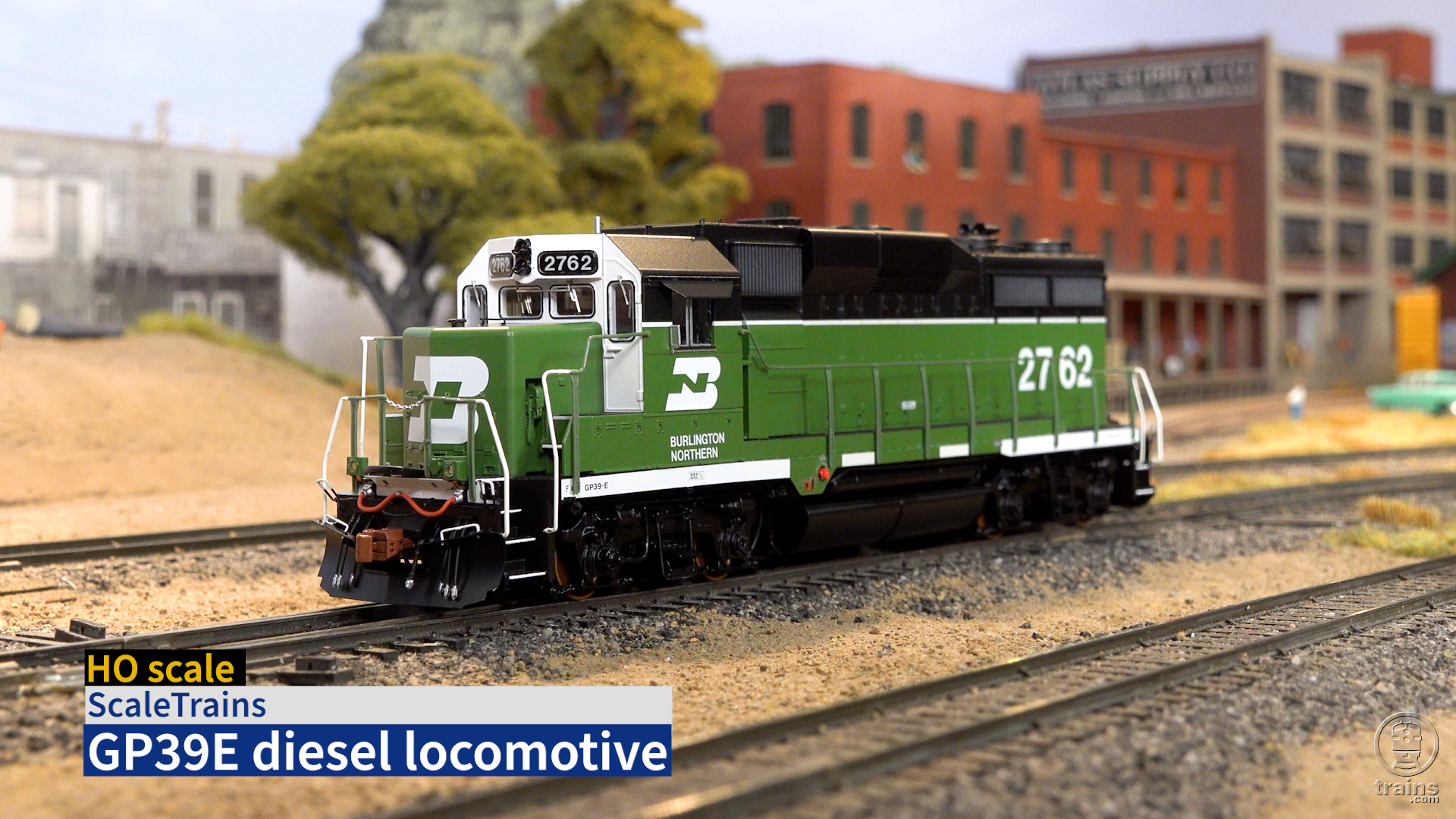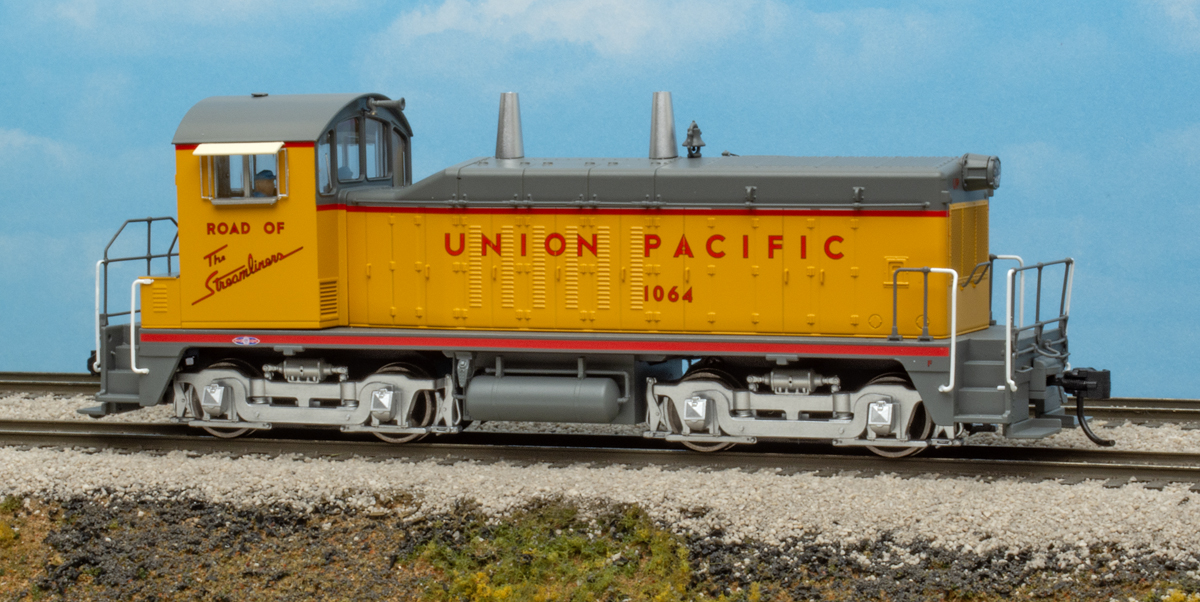The prototype. In early 1940, in anticipation of heavy war-time traffic, the Atchison, Topeka & Santa Fe had 100 class Rr-30 refrigerator cars built by General American Transportation Corp. The Athearn model represents one of the first 75 cars in the series (37290-37364); the remaining 25 cars had air circulating fans that aren’t included on the model. The car closely follows a prototype plan published in the Santa Fe Railway Rolling Stock Reference Series – Volume Two Refrigerator Cars, published by the Santa Fe Modelers Organization Inc.
To accommodate the heavy insulation, the prototype cars were built eight inches wider than normal. Their extreme width of 10′-8″ was the maximum allowed at the time, so the door latch bars, grab irons, and ladders were all inset into recesses in the sides to stay within the clearance diagram.
The model has the extra width and inset side hardware of the prototypes. The inward-facing Equipco roof hatches follow Santa Fe practice and come in the closed position. Extra operating levers are provided so the buyer can open the hatches and cement them in the open position if desired. Open hatches were used for commodities requiring ventilation en route, but they wouldn’t be appropriate for a car carrying frozen food.
A steel weight is concealed inside, and the separate underframe and AB brake system components press into the underside of the plastic floor. The Rr-30s were fitted with Duryea cushioned underframes. However, the model’s brake rigging terminates on the sliding sill at both ends instead of the truck brake levers or the hand brake. Since these parts don’t move on the model, terminating the brake rods in the middle of the underframe keeps them clear of the trucks.
Our sample rides on appropriate National B-1 solid-bearing trucks. It has machined-metal RP-25 contour wheels mounted on tubular acetal plastic axles. All of the wheelsets match the National Model Railroad Association standards gauge.
The model includes McHenry magnetic knuckle couplers body mounted at the proper height.
The Rr-30 model weighs 4½ ounces, which matches the NMRA’s Recommended Practice 20.1.
All of the prototype cars were delivered in the 1940 Santa Fe paint scheme with the Super Chief advertising slogan on one side and a map on the other. Unless a car received heavy repairs, it’s unlikely the other train slogans would appear on these cars. Thus, our sample with the Scout slogan would represent a car that had been repaired and repainted.
Even though the Santa Fe’s prototype 50-foot reefers were relatively rare, they did travel nationwide delivering frozen food to eastern markets. Athearn’s new reefer is an excellent model for layouts set between 1940 and the mid-1950s.
Price: $22.98 each
Manufacturer
Athearn Inc.
1550 Glenn Curtiss St.
Carson, CA 90746
www.athearn.com
Description: Plastic and metal ready-to-run freight car
Road names: Atchison, Topeka & Santa Fe (three car numbers per slogan): Chief, El Capitan, Grand Canyon, Scout, and Super Chief
Features:
One-piece body shell
Factory applied details
McHenry magnetic knuckle couplers body mounted at the correct height
Weight: 4½ ounces















